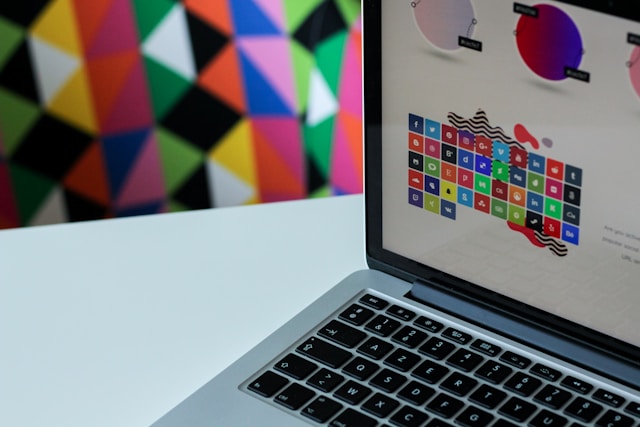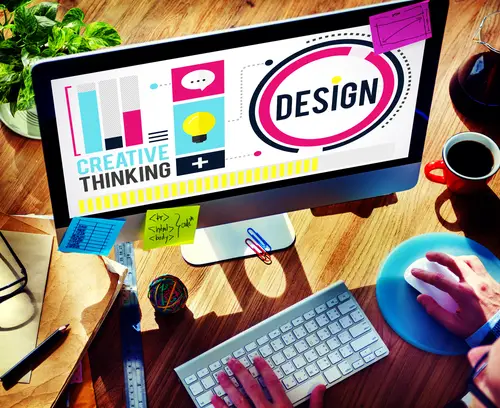Because this is a very big subject, it is not possible in a short blog to delve into this too deeply, and for this reason, this article will be fairly restricted in its approach. If there is enough interest, further articles will appear on this profession, and although I am deeply invested in the world of digital and lithographic printing, I also understand that it is a subject of interest to a fairly limited audience.

Creativity is Only a Part of Their Professional Service
It would highly undervalue graphic designers to describe them as mere artists. Graphic designers blend art and technology to visually communicate ideas. They are visual communicators who blend creativity with strategic thinking to produce compelling designs that resonate with audiences and help clients achieve their goals. We rely on graphic designers to visualise, create and help establish commercial and corporate brands through logos, to design advertising material which sells our products, to add a personal touch to our private correspondence and invitations, and to create digital stories and websites which are visually and textually compelling.
What Do Graphic Designers Do?
Graphic designers work on creating visual content that communicates messages, often working on projects such as branding, advertising, web design, and product packaging. They combine artistic talent with technical skills to develop designs that are not only visually appealing but also functional and aligned with the project’s goals. Graphic designers work across various media platforms. In digital media, they design website layouts, social media graphics, and user interfaces that enhance user experience and engagement. In print media, they create brochures, posters, magazines and packaging that communicate messages effectively through visually appealing designs. They often work with social media marketing specialists, clients, marketing teams, and copywriters, either as part of the team or in an independent freelance or consultancy capacity.
Graphic designers develop visual concepts for their clients, based on a clear understanding of the purpose and expanse of the project, the intended audience and the desired outcome. They may either take their inspiration from their own creativity, innate skills and experience or adapt ideas conveyed by their clients. They play a crucial role in creating, establishing and maintaining brand identities. They develop logos, colour schemes, typography, and other visual elements that define a brand’s personality and ensure that it stands out amongst its competitors. Their work covers both digital and litho print design aspects, as their responsibilities range from social media graphics to physical printed brochures, banners, newsletters, corporate office stationery, magazines, printed advertising and private applications.
The Two Types of Media Materials
Graphic designers must know the difference between digitally presented material and printed material as these display in two different formats. Digital print and visuals (such as on social media which is displayed on phone, laptop and tablet screens) are composed of images made from an RGB (red/green/blue) colour spectrum, whereas full-colour printed material is composed of four main colours, known as CMYK (cyan, magenta, yellow and black). CarePac in the USA describes RGB thus: “Graphic designers and publishers use the RGB color model for any media that emits light. Because the mediums emit color as red, green, or blue light, RGB is perfect for digital media design. In the RGB color paradigm, pixels on a digital screen are all one of three hues when magnified: red, green, or blue.”
A graphic designer must understand and appreciate the fundamentals of both mediums and how designs and images transfer across these. For example, a bold colour choice of a dark blue print on a strong contrasting background might work well on a computer screen, but does not necessarily present well in printed format, where it might be difficult to read and cause problems such as eye strain and a consequent lack of interest in the reader. Visuals must, therefore, take these factors into account, maintain consistency and adapt effectively on both digital screens and in printed format. This often comes with experience and an understanding of both fields. Having worked in both fields at some point is often a professional advantage as it allows for a clearer understanding of presentation in both screen and printed format. Understanding the underlying psychology of colour and how colours interact is essential in design. Graphic designers use their knowledge of colour theory to evoke emotions, establish brand identity, and create a cohesive look across materials.
The Importance of Typography in Graphic Design
Graphic designers are skilled in typography, the art of arranging text in a visually pleasing and readable way. They therefore understand the importance of font choice, size, spacing, and hierarchy to focus the viewers’ attention and improve readability. This skill is particularly important in advertising, as it is the wording (often short and to the point) on a banner which draws the attention of the buying public – either productively (positively) or negatively.
How Graphic Designers Make an Impact
Graphic designers play a significant role in shaping our perceptions of brands and information and influencing our choices and experiences. They influence multiple areas by:
- Building Brand Recognition. A well-designed logo or brand identity creates a lasting impression, helping businesses establish trust and stand out. Graphic designers craft these identities, making them memorable and impactful.
- Enhancing Communication. Visuals can convey messages more powerfully than text alone. Graphic designers create infographics, illustrations, and layouts that simplify complex ideas, making information more accessible to a wider audience.
- Improving the User Experience. Designers make digital interactions more intuitive and engaging. Their work ensures that apps, websites, and software are easy to navigate, boosting user satisfaction and engagement.
- Creating Emotional Connections. Through their use of colours, typography, and imagery, designers conjure emotions that align with viewers and consumers, strengthening brand loyalty and influencing buying behaviour.
Graphic designers have a powerful influence on the world around us, and their skills are essential in an increasingly visual, digital landscape. This article only scratches the surface of their role, but hopefully, it sparks interest in learning more about this impactful profession.

